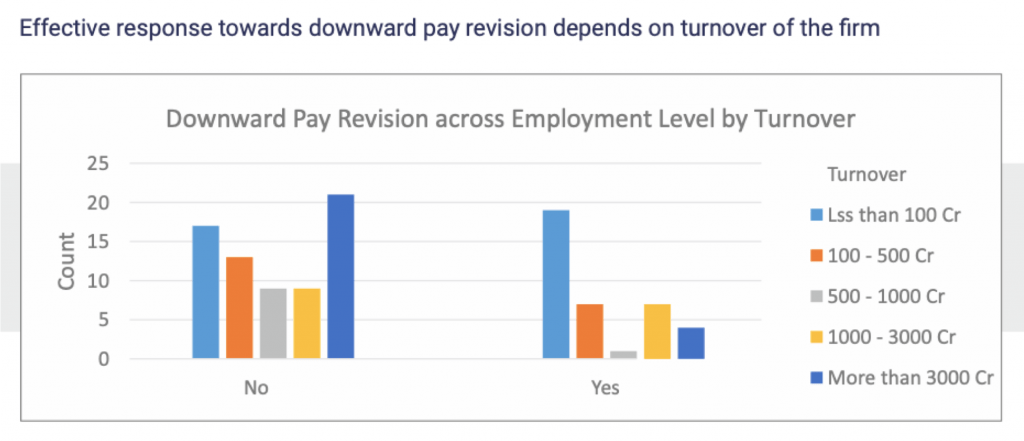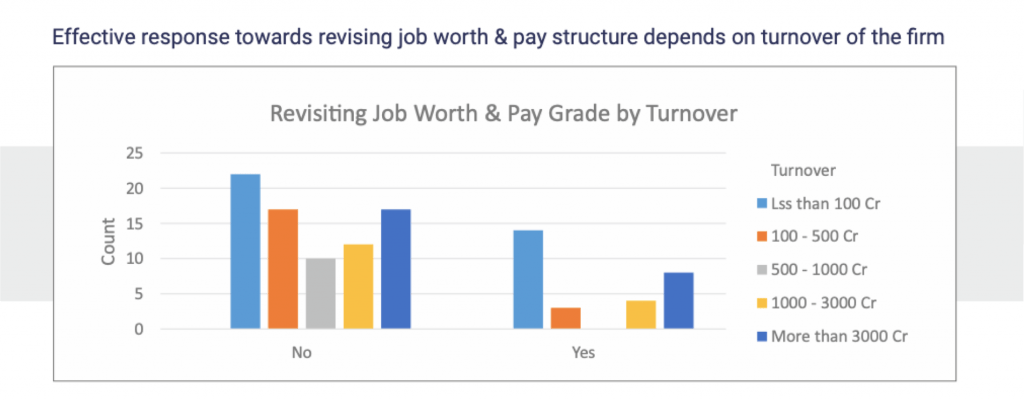What is the top priority for the heads of human resources of Indian companies in the post-COVID era? If your answer is ‘compensation and benefits’, you got it right. In addition, the community of CHROs also voted for employee communication as something that was high on their agenda. This was revealed in a survey conducted by the National Human Resource Development Network (NHRDN), covering 111 CHROs.
So what are these CHROs doing to control the crisis? Frankly, most organisations – close to 50 per cent — are looking at a slew of employee cost-reduction interventions. Deferring incentives and cancelling promotions for almost a year seem to be the most popular strategies. This is followed by downward pay revision and reduction of incentives.
When it comes to reduction in pay or restructuring of compensation, this trend is more popular among smaller firms, with a turnover of less than 100 crore, whereas larger companies have been leveraging lower incentive pay to reduce cost. In fact, a majority of the firms in the automobile and pharmaceuticals sectors have witnessed a reduction in incentive payout
After compensation and benefits and employee communication, next on the agenda for CHROs is learning and development. Almost 90 per cent of the respondents cited a greater emphasis on learning, with virtual classrooms, webinars and e-learning modules being the most trending modes of learning.
A significant majority of firms, irrespective of size — including those with turnover below 100 crore — are involved in providing e-learning avenues for their employees. In most of the mid-sized and larger firms—with more than 500 full-time employees — employees have access to both virtual classrooms and e-learning avenues. At the same time, few organisations, numbering less than 20, do not offer even the e-learning option for their workers.
Larger firms, with more than 500 crore turnover, are reportedly using more learning tools and applications than their smaller counterparts. More than 30 smaller organisations with less than 500 full-time employees are not using any apps or tools for learning.
Industry-wise, the automobile, energy, ITeS, manufacturing, BFSI and retail sectors see the maximum usage of new learning apps and tools along with a small number in the pharma segment as well.
Post COVID, most companies are also considering redefining and changing organisational policies. Policies with regard to insurance, transport, and remote working allowance are being considered for a change, and around 20 per cent of the respondents claimed to have already implemented them.
When it comes to redefining the policy process within the organisation, the majority of the smaller firms, in addition to all the mid-sized ones, are open to changing their processes. On the other hand, the majority of the larger organisations declined to make any changes.
 Bringing about a change is also an industry-specific decision according to the report. Except the energy industry, the rest, including retail, pharma, ITes, manufacturing, education, BFSI and electronics, agree to redefine the policy process in the long run.
Bringing about a change is also an industry-specific decision according to the report. Except the energy industry, the rest, including retail, pharma, ITes, manufacturing, education, BFSI and electronics, agree to redefine the policy process in the long run.
The participant CHROs also spoke about hiring, and it was indicated that although there is a hiring freeze across all sectors, the impact varies according to the employee level. More than 50 per cent of the respondents believe that entry-level hiring will be the least impacted, while almost 50 per cent believe hiring for gig workers will be affected. While the recruitment of management trainees may continue, close to 46 per cent believe hiring for management-level positions may be put on hold.
 The CHROs also had a piece of advice for the future. They felt the focus should be on business sustainability and employee productivity in the short term. Creatively managing employee cost and productivity, continuous communication, training and focus on employee wellbeing will be key during this time.
The CHROs also had a piece of advice for the future. They felt the focus should be on business sustainability and employee productivity in the short term. Creatively managing employee cost and productivity, continuous communication, training and focus on employee wellbeing will be key during this time.
In the longer run, they predict bigger challenges along two major threads. The first is that of business turnaround, including concerns over business model, customer relationships and impact of revenue among others. The second is the transformation challenge, which calls for companies completely re-imagining their way of work.



